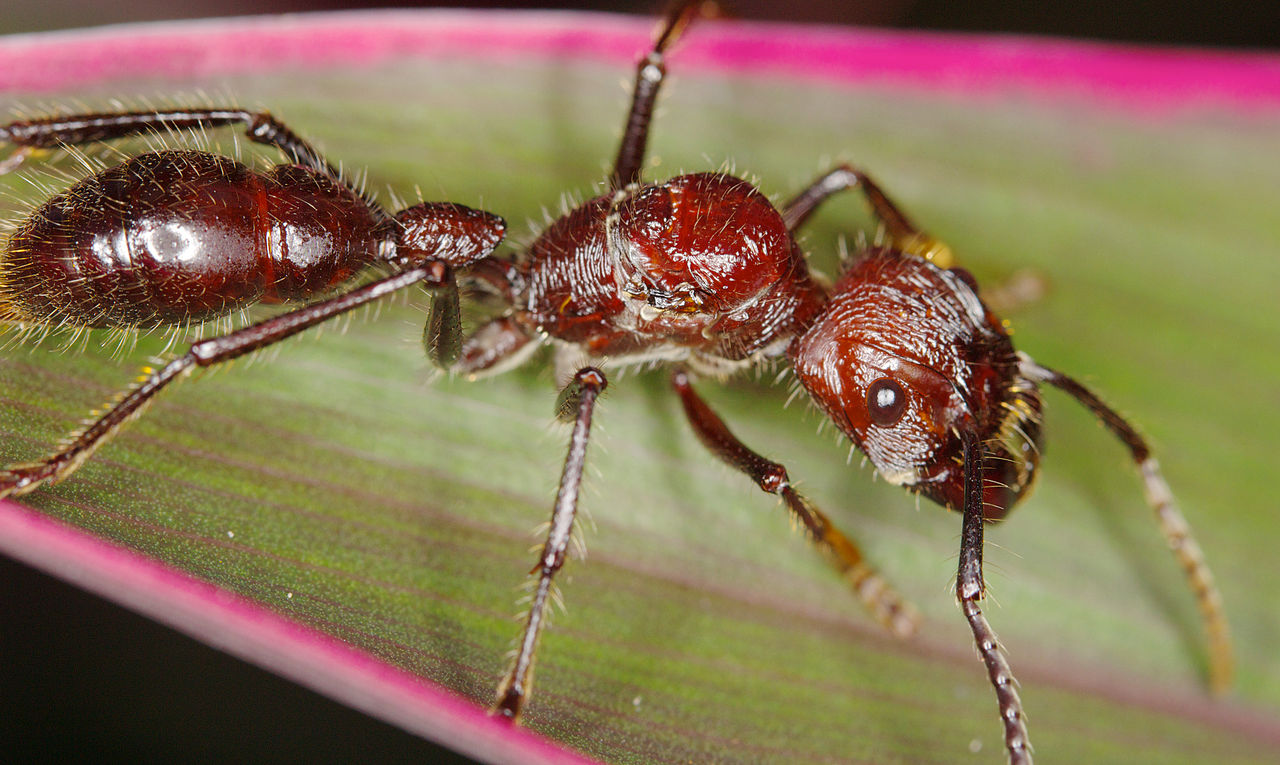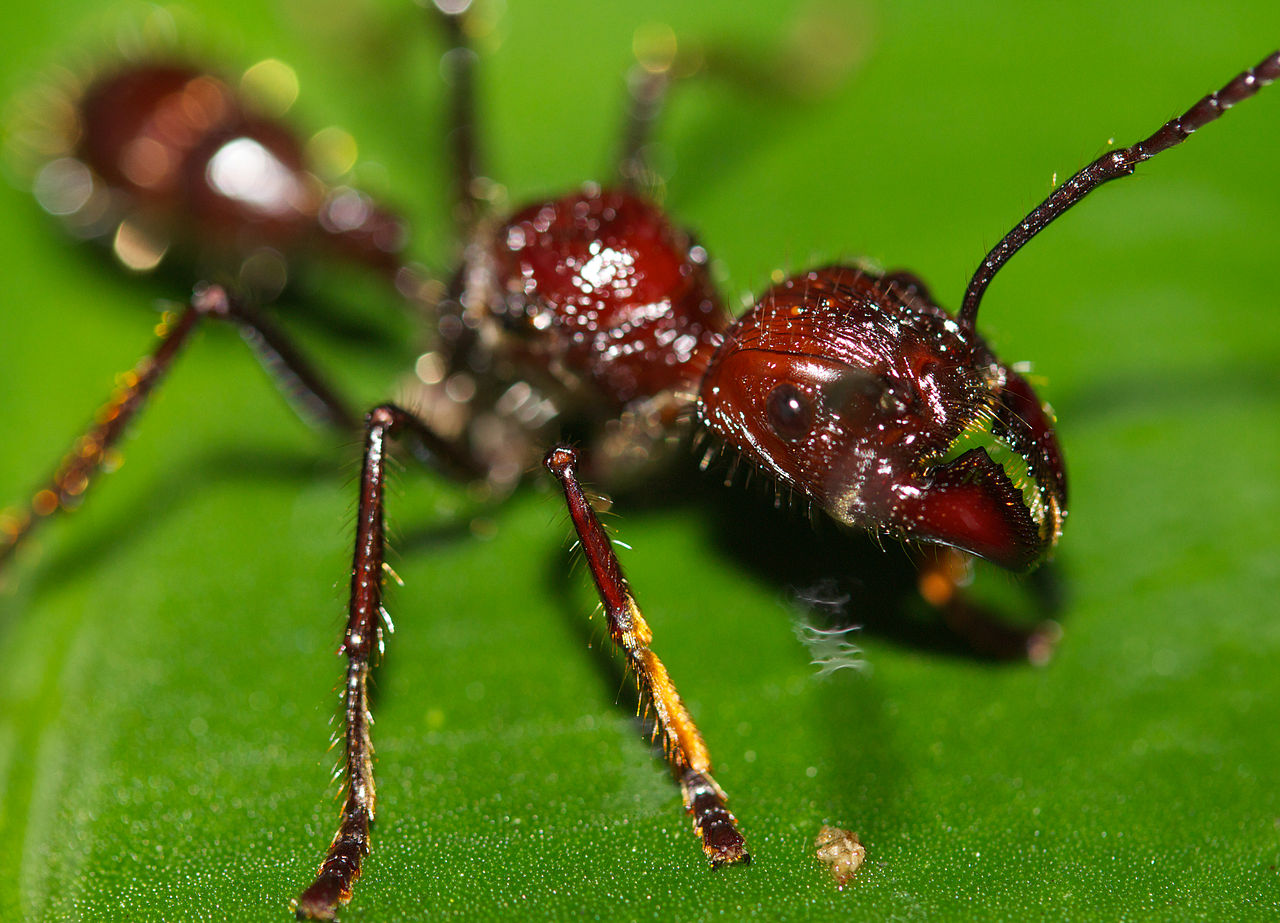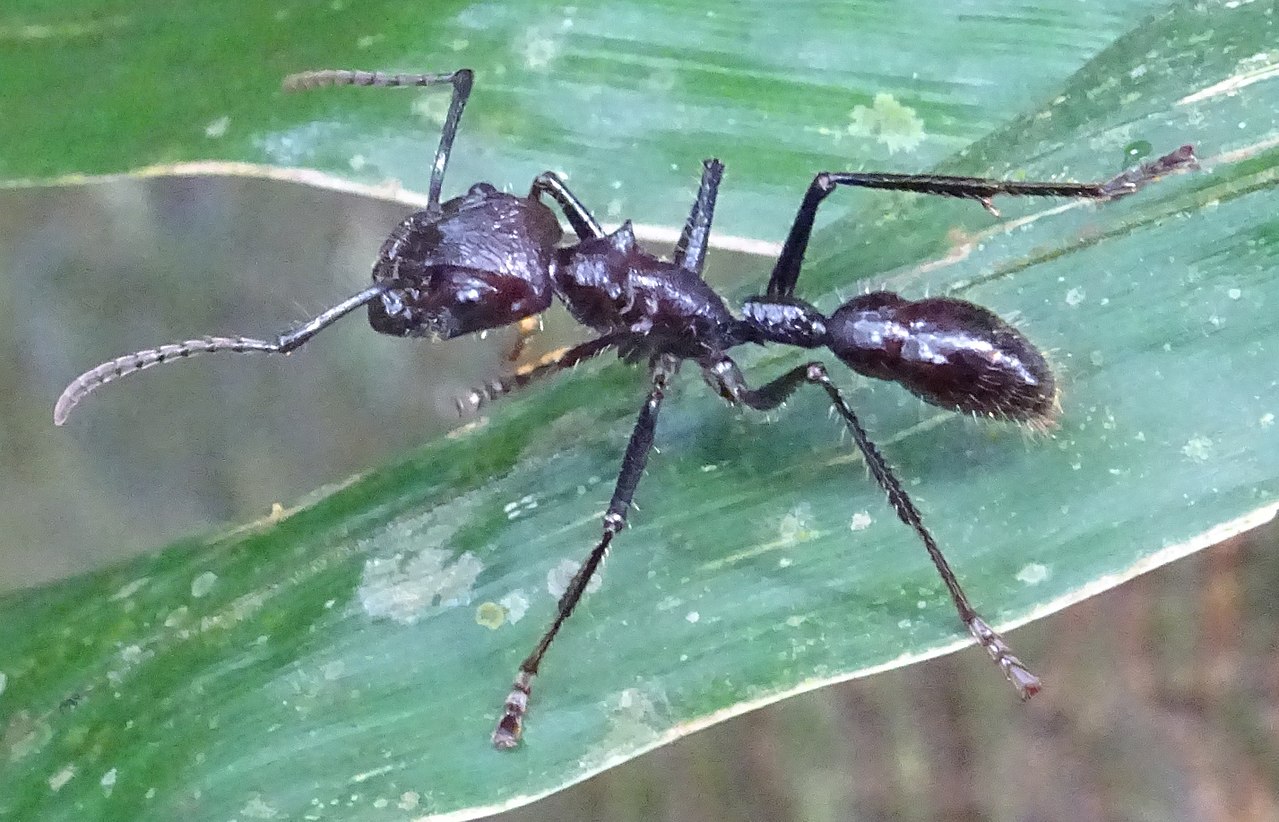
Within the kingdom of ants, there are many different species. Some are common and we know them with the naked eye. But there are others, like the bullet ant, whose name catches our attention, although you wouldn't want to get close to it, let alone bite you.
If you want to know the bullet ant characteristics, the habitat where it usually lives, its feeding and reproduction, or to know more about the bite of this animal, do not hesitate to take a look at what we have prepared.
Bullet Ant Characteristics
The bullet ant, also known as a tocantera ant or by its scientific name, paraponera clavate, is a unique hymenopteran of the genus Paraponera (meaning pain). Its size is much larger than that of "common" ants, since it is capable of reaching 18-30 millimeters. Its body is red and black, in various shades, and it has no wings. The queen of this species is even larger than the other specimens.
It is characterized by having a jaw on the head as if they were pincers that it uses to bite and immobilize its prey. But in itself, this bite is nothing if we take into account that, in addition, it has a stinger in the back with which it can inject a powerful poison with which it is capable of paralyzing its prey so that it does not offer resistance. .
[related url=»https://infoanimales.net/ants/ant-queen/»]
Another of the characteristics of this hymenopteran is that it is covered by "hair", although not enough to cover it completely.
Their life expectancy is not too high since they live between 45 and 60 days.
Habitat
The bullet ant is easy to find in the zone that goes from Nicaragua to the Amazon. In fact, this ant is part of some tribal rituals. For example, one of the rituals that use them is to put them "anesthetized" in gloves and put them on children who, when the ants wake up and see that they are trapped, begin to sting, in such a way that the little one must endure 10 minutes. with the gloves to consider him "a man". And not just once, he has to go through it up to 20 times.
The natural habitat of the bullet ant is the forest. It lives both on the ground and in trees. and you can find lianas and even trunks completely covered by these ants.
In fact, your colony can have several entrances, both through the ground and between the roots of the trees. And depending on their role, they are in charge of protecting the nest, looking for food or reproducing.
bullet ant feeding

The bullet ant's diet is quite varied. But basically it consists of two foods: animals and nectar Among the animals that are most part of their diet are termites, millipedes, various insects and even other ants. As for nectar, they can also eat sap and exudates from other plants.
bullet ant reproduction

The reproduction of the bullet ant corresponds only to the queen. She is she makes a flight together with the male in such a way that the eggs are fertilized in the air, where the two mate. Later, the queen builds a small chamber where she enters and, for a whole year, she does not leave there but she is in charge of laying the eggs and feeding them since they will be the ones that will form the group of worker ants.
Once these ants are adults, they will be the ones in charge of expanding the nest and taking care of the eggs and feeding the queen so that the colony continues to grow. In fact, it is common for the anthill is made up of about 500 bullet ants in total, and may even be higher.
What happens if you get stung by a bullet ant?
Unfortunately, the bullet ant stings. And it hurts a lot. In addition to taking into account that we are talking about a "huge" ant, compared to others, the sting is not pleasant, and in some cases it has even been reported that it is deadly.
Reportedly, A bullet ant sting is 30 times more painful than a bee or wasp sting. which indicates that it is not an animal that you should deal with, especially since it is capable of stinging, as its name indicates, projecting the shot.
[related url=»https://infoanimales.net/wasps/asian-wasp/»]
On the Internet you can find some videos of foolish adventurers who are encouraged to try what a bullet ant sting is, as well as the consequences of this "challenge". However, the truth is that it is not as "pretty" as it is said. And it is that, when you get itchy, in addition to the reactions that you are going to have (burning, intense pain, spasms, feeling of oppression in the area, inflammation, cold sweats or fever...), it can cause a bigger problem that makes you have to go to emergencies.
The sting has two phases. The first is when the ant's jaws ensnare its victim. They are very powerful and do not let anyone escape. But the next phase is even worse, and that is that, when it has fixed its victim, the ant flies to the abdomen and stings with its sting at the same time, ejaculating a quite strong poison, although it is not fatal (unless there are medical problems).
the painful sting

According to Schmidt pain index of stings, which does not have scientific validity as such, but much is known by scholars of science and animals, there are three to four Hymenoptera that are capable of reaching the highest level of this index. And one of them is the bullet ant. According to the entomolodo Schmidt, the sting produces a “pure, intense, brilliant pain. Like walking on hot coals with a three-inch rusty nail driven into your heel.
The pain from a bullet ant bite can last up to a whole day. In addition, the area becomes inflamed and red. But not only that. It burns too, in such a way that it's like you have a burn that won't stop burning inside.
And is that the bite is composed of a poison, poneratoxin, which is a paralyzing neurotoxic compound, in such a way that we are talking about a very powerful toxin that can put a person's health at risk.
excellent information